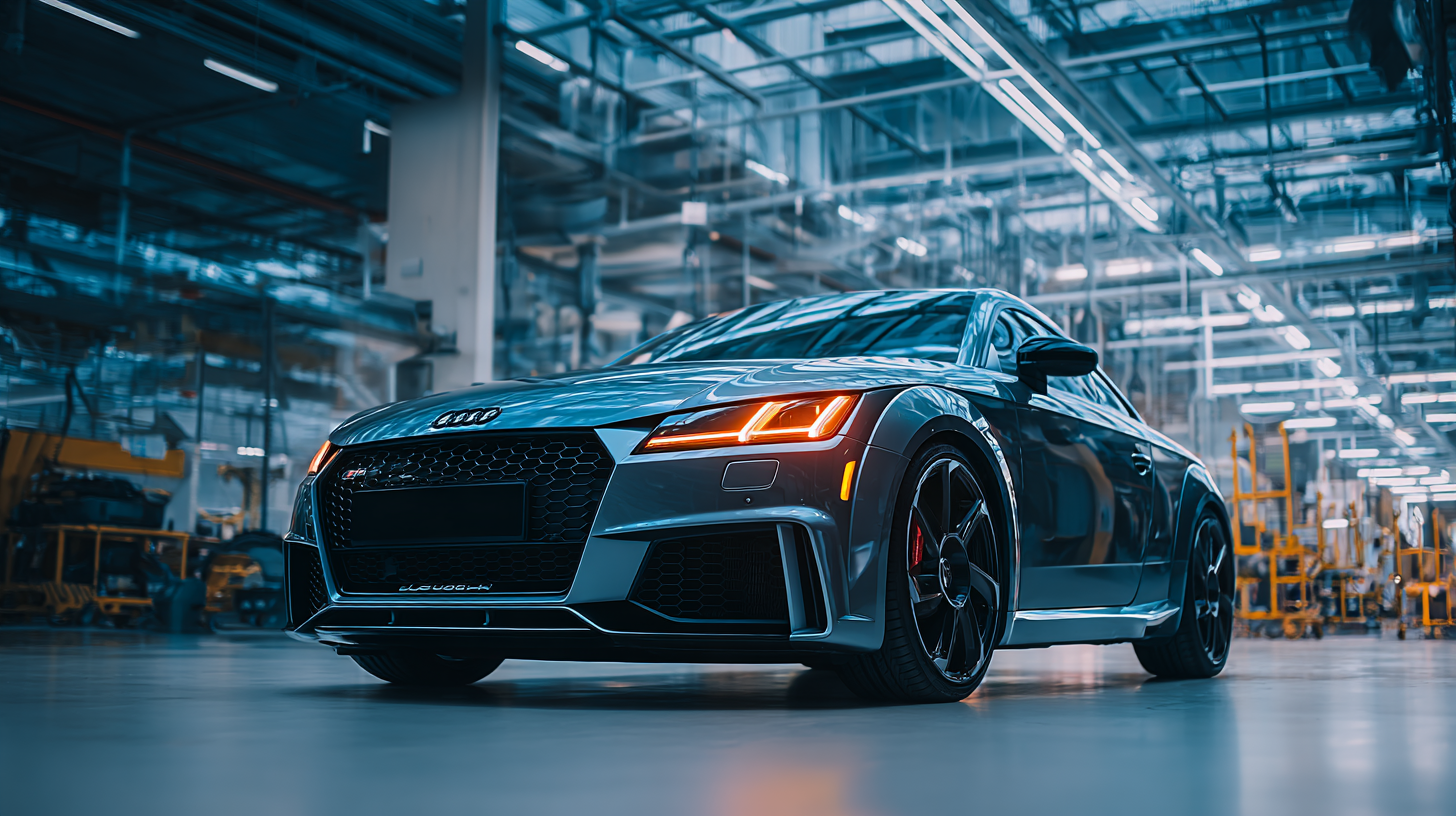
Top Strategies for Maximizing Audi Parts Quality and Performance
When it comes to maintaining the Audi, the quality of the parts you choose plays a crucial role. Audi Parts are not just components; they are engineered to meet the highest standards of performance and reliability. However, many car enthusiasts and everyday drivers face challenges in selecting the right parts that align with their vehicle’s specifications and performance goals.

In this blog, we will explore the top strategies for maximizing Audi Parts quality and performance, addressing common problems associated with inferior components, and providing insights on how to make informed decisions. From understanding compatibility to recognizing genuine versus aftermarket parts, we aim to equip you with the knowledge needed to ensure your Audi remains in peak condition.
Join us as we delve into these essential strategies that will not only enhance your driving experience but also protect your investment in one of the world's premier automotive brands.
Understanding Audi Parts Quality: Key Factors to Consider
When considering the quality and performance of automotive parts, particularly for luxury vehicles, several key factors come into play. One significant aspect is the brand strategy that emphasizes high value for money. For instance, certain luxury models offer competitive pricing compared to their peers, which not only attracts a broader customer base but also maintains a perception of quality without exorbitant costs. Research indicates that optimizing materials and manufacturing processes can enhance durability and performance, leading to a more satisfying user experience.

Tips to maximize parts quality include regularly assessing aftermarket options. According to industry reports, original equipment parts (OEM) often guarantee better fit and performance compared to non-OEM alternatives. By investing in these components, vehicle owners can ensure compatibility and longevity, ultimately saving on future repair costs. Another recommendation is to stay abreast of new technologies in automotive parts development, such as lightweight materials and advances in engineering, which contribute to improved fuel efficiency and performance metrics.
Furthermore, routine maintenance and inspections cannot be overlooked when aiming to maintain high parts quality. A survey noted that vehicles with a proactive maintenance schedule tend to outperform those neglected in this regard. Regular checks allow for early detection of potential issues, preserving both the performance and safety of the vehicle.
Advanced Technologies Enhancing Audi Parts Performance
Advanced technologies are transforming the automotive industry, particularly in the production and performance optimization of Audi parts. Manufacturers are increasingly integrating advanced materials such as carbon fiber and aluminum alloys, which are not only lighter but also significantly stronger than traditional materials. According to a report from the International Journal of Automotive Engineering, the use of lightweight materials can lead to a weight reduction of up to 40%, enhancing fuel efficiency and overall vehicle performance.

Moreover, sophisticated manufacturing techniques such as 3D printing and additive manufacturing are revolutionizing the way Audi parts are produced. This technology enables the creation of complex geometries that traditional manufacturing methods struggle to achieve. A study by the Society of Automotive Engineers indicates that the use of 3D printing can reduce production time by up to 50%, allowing for rapid prototyping and reduced costs while maintaining high-quality standards. By leveraging these advanced technologies, Audi is not just improving the performance of its parts but also optimizing the overall efficiency and sustainability of its production processes.
Best Practices for Selecting High-Quality Audi Replacement Parts
When it comes to maintaining the performance and longevity of your Audi, selecting high-quality replacement parts is crucial. First and foremost, always opt for OEM (Original Equipment Manufacturer) parts that align with your vehicle’s specifications. These parts are designed specifically for your Audi model, ensuring compatibility and optimal performance. While aftermarket parts may seem like a cost-effective alternative, they often lack the quality and durability of OEM parts, which can lead to performance issues down the line.
Another essential practice is to thoroughly research and read reviews before purchasing replacement parts. Look for reputable suppliers who specialize in Audi parts and have a solid track record of customer satisfaction. Engaging with online communities and forums can also provide insights into which brands and parts offer the best quality. Additionally, don't hesitate to consult with a trusted mechanic who has experience with Audis to recommend parts that meet high standards. By taking these steps, you can maximize the quality and performance of your Audi, ensuring it runs smoothly for years to come.
Top Strategies for Maximizing Audi Parts Quality and Performance
Maintaining Audi Parts: Tips for Longevity and Efficiency
When it comes to maintaining Audi parts for longevity and efficiency, regular inspection is key. Owners should make it a habit to check important components like tires, brakes, and fluids at consistent intervals. This proactive approach not only helps in identifying wear and tear early but also ensures that all parts are functioning optimally, thereby enhancing the overall performance of the vehicle. Maintaining the correct tire pressure and ensuring proper alignment can drastically improve fuel efficiency while extending the life of your tires.
Another crucial aspect of Audi parts maintenance is adhering to the manufacturer’s maintenance schedule. This schedule outlines when specific services should be performed, such as oil changes, filter replacements, and timing belt checks. Using high-quality, genuine Audi parts during these services is essential. While aftermarket alternatives may seem cost-effective, they often lack the same precision and quality that original parts provide. Investing in genuine parts not only supports the vehicle's performance but also helps maintain its resale value in the long run. Regular detailing and washing can also help prevent rust and corrosion, keeping both the aesthetics and functionality of your Audi in top shape.
Top Strategies for Maximizing Audi Parts Quality and Performance
| Strategy | Description | Expected Benefits | Tips for Implementation |
|---|---|---|---|
| Regular Maintenance | Scheduled checks and servicing of parts. | Increased lifespan and reliability. | Follow manufacturer’s service schedule. |
| Quality Parts Selection | Choosing OEM or high-quality aftermarket parts. | Enhanced performance and safety. | Research and verify parts before purchase. |
| Proper Installation | Ensuring parts are installed correctly. | Preventing premature wear and failures. | Hire a certified technician for installation. |
| Consistent Cleaning | Regularly cleaning parts to prevent buildup. | Improved operation and longevity. | Use recommended cleaning products and methods. |
| Monitoring Performance | Keeping track of performance metrics. | Identifying issues before they escalate. | Use diagnostic tools for accurate monitoring. |
Sustainability in Audi Parts Production: Innovations and Trends
In recent years, sustainability has become a pivotal aspect of Audi's parts production, with the company embracing innovative practices that minimize environmental impact while enhancing product quality. One notable trend is the incorporation of recycled materials in the manufacturing process. By using materials that would otherwise contribute to landfill waste, Audi not only reduces its carbon footprint but also sets a precedent for reduced resource consumption. This commitment to sustainability is evident in the production of components like lightweight body panels and interior trims, which leverage advanced recycling techniques to maintain both performance and aesthetic standards.
Additionally, Audi is investing heavily in cutting-edge technologies that promote energy efficiency in production. Automation and smart manufacturing practices have led to improvements in resource management, significantly lowering energy usage while ensuring high-quality output. The integration of digital twins and predictive analytics allows for better forecasting and quality control, ensuring that each part meets Audi's stringent performance requirements. As these initiatives continue to evolve, they not only enhance the sustainability of Audi's operations but also position the brand as a leader in the automotive industry's shift toward environmentally responsible manufacturing.
Related Posts
-

Unmatched Quality in Audi Bodykits: Why Global Buyers Trust Made-in-China Solutions
-

Exploring the Unique Features and Applications of the Best Audi Accessories with a Comprehensive How-To Guide
-

Chinese Manufacturing Elevating Global Standards with the Best Audi Auto Parts
-

The Future of Automotive Enhancements: Innovating with the Best Audi Rear Bumper
-

7 Amazing Reasons to Choose the Best Car Bodikit for Your Global Business
-

Top Strategies for Sourcing the Best Audi Parts in a Competitive Market



